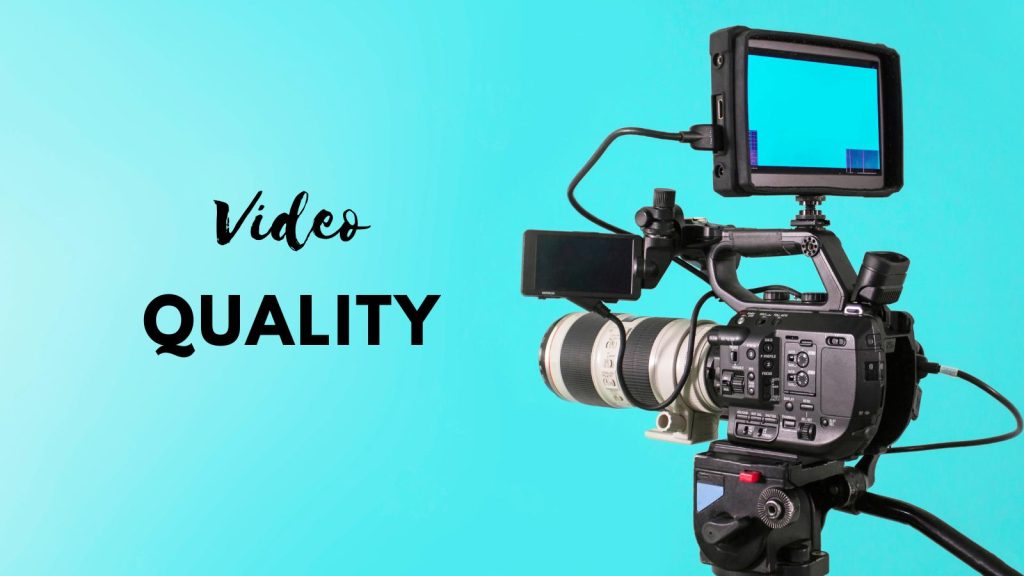Since 2020, the world has gone crazy for business video calls. We were forced to do them under certain circumstances, but companies across the globe soon realised how convenient these calls were.
You could hold more meetings with clients in various locations, making it much easier to manage your schedule.
Fast forward three years, and your company still uses video calls almost every day. Whether you’re talking to a remote working team or consulting with clients, you need to ensure your video calls are up to scratch.
Unfortunately, various problems can arise, making these calls less effective and potentially damaging your reputation and leading to miscommunications.
While there is a wide range of possible issues, the three below are the biggest ones you need to avoid:
Table of Contents
1. Poor Video Quality
You never want your video calls to look blurry and pixelated. They should be crystal clear, helping you maintain a professional image while ensuring everyone can see what you’re doing.
Poor video quality is usually down to one or two issues:
- A bad internet connection
- A terrible webcam
You’ll know if your internet connection is the issue because the video feed is pixelated and keeps stuttering. Likewise, it looks awful even when you’re not filming yourself and are sharing your screen instead.
Here, you’ll need to upgrade to a faster connection. Look for some NBN plans that can give you upwards of 250 Mbps download and 25 Mbps upload. Honestly, the faster the connection the better.
If your speeds are quick but the video quality is still bad, you may need to invest in a higher-quality webcam. Do not use any means to avoid reasons to buy a new one if you need it.

2. Poor Audio Quality On Business Video Calls
Having crystal-clear video is excellent, but what happens when the audio is poor? People struggle to understand what you’re saying, meaning things aren’t communicated as accurately as they could be.
You don’t want to sound like a robot on video calls, so make sure your audio is perfect. Again, upgrading your internet connection can help, though you should also purchase a good microphone to speak into.
This can be a headset mic or a standalone one with a good noise gate to block out sounds from elsewhere around you.
3. Technical Mishaps During Video Business Calls
Here, we’re referring to issues during the video call related to the software you’re using. For instance, you’re on Zoom and you spend ages trying to work out how to share your screen or record what you’re doing.
It can eat into video calls and leave everyone feeling quite embarrassed for you. Plus, if this happens during client meetings, it can seriously harm your professional image.
Our advice is two-fold:
- Pick a video call platform that you feel comfortable using
- Learn all the features before you start video calls
This will help you get to grips with all the technical software and features, enabling you to do everything in a split second. You won’t drag out calls or have to keep saying “bear with me” every five seconds.
Honestly, there’s nothing worse than a pixelated video call with terrible audio and someone who doesn’t know what they’re doing. Avoid these problems whenever it’s your turn to host a call, and everything will run smoothly.
4. Look Into The Camera During Business Video Meetings
Looking directly into the camera during business video calls is essential. By maintaining eye contact with the camera, you create a sense of connection and engagement with your audience. It conveys professionalism and trustworthiness, making a strong impression on your colleagues or clients.
When you focus on the camera, you are giving your full attention, which shows respect and interest. Additionally, looking in the camera helps to establish authority and credibility, as it allows others to perceive you as confident and knowledgeable.
Therefore, make a conscious effort to direct your gaze towards the camera during virtual meetings to leave a lasting and positive impact.
5. Forgetting To Hit The Mute Button
During business video calls, it is important to consider hitting the mute button for various reasons. First, background noise can be distracting and disrupt the flow of the meeting.
By muting yourself, you can eliminate any potential disruptions and ensure a more focused conversation.
Second, if you are not actively participating in the discussion, muting your microphone can prevent any unintentional interruptions or distractions. Additionally, muting can be helpful during times when you need to take notes or complete other tasks without causing disturbance.
Overall, using the mute button during business video calls can help maintain a professional and efficient virtual meeting environment.
Wrapping Up: Business Video Calls
Hosting business video calls creates new opportunities, but common mistakes can disrupt progress and cost time. Before you start, plan for clear agendas, check your tech setup, address privacy needs, and think about how to keep everyone engaged.
Poor lighting, audio issues, distractions, and unclear goals can quickly derail meetings. By steering clear of these five problems, you’ll make every call count, show respect for your team’s time, and build stronger business ties.
Make these video calls work for you, not against you. How will you improve your next call?




